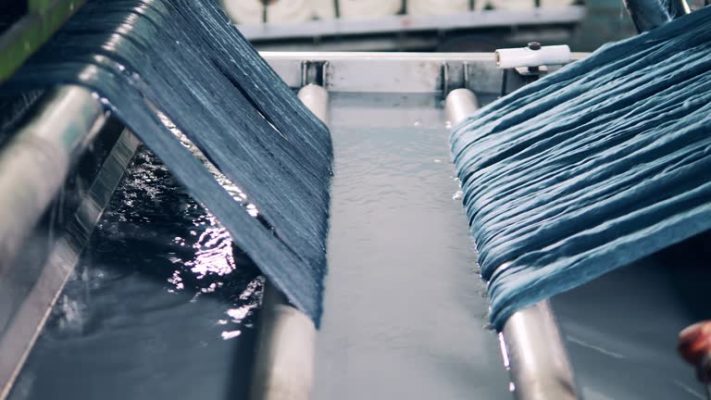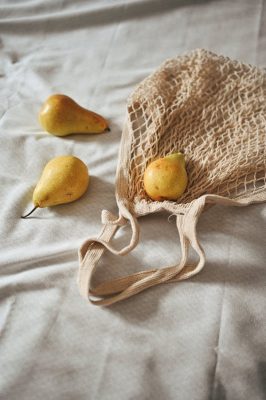- The Problem with Conventional Fabrics:
- Defining Sustainable Fabric Sourcing:
- Certifications: Your Guide to Sustainable Textiles:
- Sustainable Fabric Choices: A Closer Look
- Identifying Truly Sustainable Brands: A Practical Guide
- Making a Difference Through Conscious Consumption:
- The Future of Fashion: A Sustainable Vision
- Conclusion
- About IGREEN TEX
- IGREEN TEX VIETNAM CO LTD
Fast fashion’s toll on the environment is heavy. Consumers are waking up to this reality. They seek sustainable and ethical alternatives. “Sustainable Fabric Sourcing” is the answer. This guide helps navigate its intricacies. It empowers informed decisions.
The Problem with Conventional Fabrics:
Current fabric production pollutes our planet. It depletes vital resources at alarming rates. Synthetic fibers shed microplastics into oceans. These tiny particles harm marine life. They disrupt delicate ecosystems. Conventional cotton farming uses pesticides. These chemicals endanger farmworkers’ health. They also threaten biodiversity. Textile dyeing often releases toxic chemicals. These pollutants contaminate water sources. They pose risks to human and animal life. The fashion industry must change its ways.

Defining Sustainable Fabric Sourcing:
Sustainable sourcing prioritizes the planet’s health. It champions social responsibility within the industry. It minimizes environmental damage at every stage. It promotes fair wages and safe working conditions. It supports thriving local communities. It utilizes resources with maximum efficiency. It actively reduces waste and pollution. It favors recycled and renewable materials. This approach safeguards our planet’s future.

Certifications: Your Guide to Sustainable Textiles:
Certifications help navigate the complex landscape. They verify a fabric’s sustainability claims. They offer valuable reassurance to consumers.
-
GOTS (Global Organic Textile Standard): GOTS certifies organic fibers throughout the supply chain. It ensures strict environmental and social criteria are met. This covers fiber production, processing, manufacturing, and packaging.
-
OEKO-TEX Standard 100: This standard tests for harmful substances. It ensures textiles are safe for human skin. It focuses on chemical safety, not organic production.
-
Bluesign: Bluesign prioritizes resource efficiency in textile production. It minimizes environmental impact across all stages. It addresses water usage, air emissions, and chemical management.
-
Fairtrade International: Fairtrade champions fair labor practices. It ensures safe working conditions for farmers and workers. It promotes sustainable agricultural practices. It empowers producers in developing countries.
-
Recycled Claim Standard (RCS) & Global Recycled Standard (GRS): These standards verify the percentage of recycled content. They track recycled materials throughout the supply chain. They provide transparency for consumers.
Sustainable Fabric Choices: A Closer Look
Many eco-friendly fabric alternatives exist today. They offer sustainable choices for conscious consumers.
-
Organic Cotton: Organic cotton farming avoids harmful pesticides and fertilizers. It promotes soil health and biodiversity. It requires less water than conventional cotton.
-
Hemp: Hemp is a fast-growing, resilient crop. It requires minimal water and no pesticides. It produces strong and durable fibers. It offers a sustainable alternative to cotton.
-
Linen: Linen comes from the flax plant. Flax requires minimal water and pesticides. Linen fabrics are breathable, durable, and biodegradable.
-
Tencel (Lyocell): Tencel is derived from sustainably harvested wood pulp. Its closed-loop production process recovers and reuses solvents. This minimizes environmental impact.
-
Recycled Polyester: Recycled polyester utilizes plastic bottles. This reduces plastic waste in landfills. It lowers the demand for virgin polyester production.
-
Recycled Cotton: Recycled cotton utilizes pre- and post-consumer cotton waste. This extends the life cycle of existing cotton resources. It reduces the need for new cotton production.
-
Innovative Materials: New sustainable materials are constantly emerging. Mushroom leather, pineapple leather (Piñatex), and algae-based fabrics offer exciting alternatives. These innovative materials push the boundaries of sustainable fashion.
Identifying Truly Sustainable Brands: A Practical Guide
Transparency is key to sustainable sourcing. Look for brands that openly share their practices.
-
Seek Certifications: Look for recognized certifications like GOTS and OEKO-TEX. Verify their validity on the certifying organization’s website.
-
Research Brand Websites and Social Media: Look for detailed information on their sustainability commitments. Seek specific details about their supply chain.
-
Look for Third-Party Verification: Independent organizations can assess a brand’s sustainability. This provides added credibility to their claims.
-
Ask Questions Directly: Contact brands to inquire about their sourcing. Ask about their production processes and labor practices. A transparent brand will readily answer.
-
Support Smaller, Ethical Brands: Smaller brands often prioritize sustainability. They often have more control over their supply chains.
-
Beware of Greenwashing: Greenwashing is misleading marketing. It makes products seem more sustainable than they truly are. Look for concrete evidence, not vague claims.
Making a Difference Through Conscious Consumption:
Sustainable fabric sourcing requires active consumer participation. Every purchase decision holds power.
-
Buy Less, Choose Well: Invest in high-quality, durable garments. Reduce the need to replace clothes frequently.
-
Proper Garment Care: Extend the lifespan of your clothes through proper care. Follow washing instructions carefully. Repair clothes instead of discarding them.
-
Support Sustainable Businesses: Vote with your wallet. Support companies that prioritize ethical and sustainable practices.
-
Advocate for Change: Encourage brands to adopt sustainable practices. Contact your elected officials to support policies promoting sustainable fashion.
The Future of Fashion: A Sustainable Vision
The fashion industry is undergoing a transformation. Consumers are demanding change. They are pushing for greater transparency and sustainability. By making informed choices, we can drive this positive shift. We can create a more ethical and sustainable future for the fashion industry. Sustainable fabric sourcing is the cornerstone of this movement. It empowers us to build conscious closets. It helps protect our planet for future generations. This requires collective action. It demands a conscious shift in our consumption habits.

Conclusion
The journey towards a truly sustainable wardrobe isn’t a race, but a marathon. Sustainable fabric sourcing is a complex and evolving landscape, but armed with the knowledge and resources outlined here, you can make informed choices that align with your values. By embracing conscious consumerism, supporting ethical brands, and advocating for greater transparency, we can collectively weave a brighter, more sustainable future for the fashion industry – one thread at a time. Every purchase is a vote, and with each conscious decision, we move closer to a world where style and sustainability go hand in hand.
About IGREEN TEX
IGREEN TEX is a provider of fashion and textile products, offering a wide range of apparel both domestically and internationally. Our commitment to quality ensures that our products not only meet the highest standards but also promote eco-friendly practices.
IGREEN TEX VIETNAM CO LTD
Address: No. 83, A4 Street, Ward 12, Tan Binh Dist, HCMC
Tax code: 0315844409
Email: info@igreentex.com
WhatsApp/Viber/Zalo: +84 938.045.900




